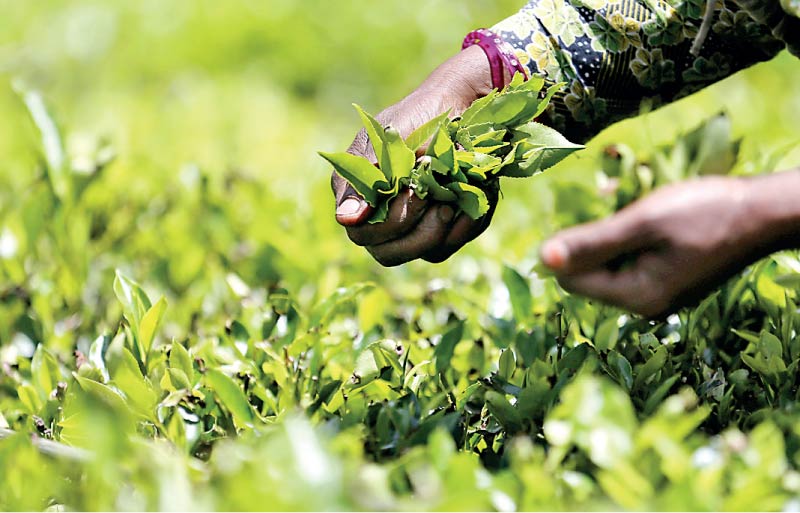Sunday Apr 20, 2025
Sunday Apr 20, 2025
Thursday, 21 April 2022 01:43 - - {{hitsCtrl.values.hits}}

Tea exports in the first quarter have plunged by $ 52 million in March in comparison to a year ago, Asia Siyaka Commodities PLC said yesterday.
It said exports in January to March amounted to $ 286.7 million recording a loss of $ 52 million compared with $ 338 million in the corresponding period of last year.
“This loss of income is mainly from the 9% drop of quantity YoY 2021. The approximate FOB value per kilogram also declined to $ 4.50 this year compared with $ 4.84 the year before; reflecting higher costs, weakening curries of key markets, COVID related disruption and other factors,” Asia Siyaka said.
Analysing Customs data, Siyaka Research said a total of 23.1 million kg was shipped in March, 10% lower than the previous year’s monthly quantity of 25.8 million kg. March potential has always been in excess of 25 million kg with the only exception being 2020 when the initial COVID lockdown disrupted work.
The Q1 total for 2022 is now a very low 63.7 million kg down 9% on last year’s figure of 69.8 million kg and the lowest January – March in more than 20 years.
Asia Siyaka said the primary reason for declining exports for Q1 2022 has been the steady decline of tea production from November 2021 until February 2022. Cumulative production for these four months of 2021/22 was 81.5 million kg, whilst in 2020/21 production was 18% more at 99.2 million kg. The absence of fertiliser and agro chemicals, rising costs and a national policy that disregard practical agriculture has left the industry lagging behind.
Loyal buyers of Ceylon tea are beginning to give up on us and are shifting to other origins. A classic case is Japan, one of the strongest buyers of High Grown Ceylon tea and a market crucial to the viability of this segment; has purchased only 872,232 Kgs during the period January – March 2022. In the two previous years exports in Q1 to this destination were 1.5 million kg and 1.4 million kg.
Asia Siyaka said the tea industry is already struggling with aging tea bushes, slow replanting, climate change, much higher shipping costs and rising inflation in most of our markets. “Availability of fertilisers and agrochemicals at a usable cost and at the right time is crucial if Ceylon Tea is to recover lost markets. The first round of fertiliser must go in over the next 2-3 weeks,” it added.

Discover Kapruka, the leading online shopping platform in Sri Lanka, where you can conveniently send Gifts and Flowers to your loved ones for any event including Valentine ’s Day. Explore a wide range of popular Shopping Categories on Kapruka, including Toys, Groceries, Electronics, Birthday Cakes, Fruits, Chocolates, Flower Bouquets, Clothing, Watches, Lingerie, Gift Sets and Jewellery. Also if you’re interested in selling with Kapruka, Partner Central by Kapruka is the best solution to start with. Moreover, through Kapruka Global Shop, you can also enjoy the convenience of purchasing products from renowned platforms like Amazon and eBay and have them delivered to Sri Lanka.
Discover Kapruka, the leading online shopping platform in Sri Lanka, where you can conveniently send Gifts and Flowers to your loved ones for any event including Valentine ’s Day. Explore a wide range of popular Shopping Categories on Kapruka, including Toys, Groceries, Electronics, Birthday Cakes, Fruits, Chocolates, Flower Bouquets, Clothing, Watches, Lingerie, Gift Sets and Jewellery. Also if you’re interested in selling with Kapruka, Partner Central by Kapruka is the best solution to start with. Moreover, through Kapruka Global Shop, you can also enjoy the convenience of purchasing products from renowned platforms like Amazon and eBay and have them delivered to Sri Lanka.